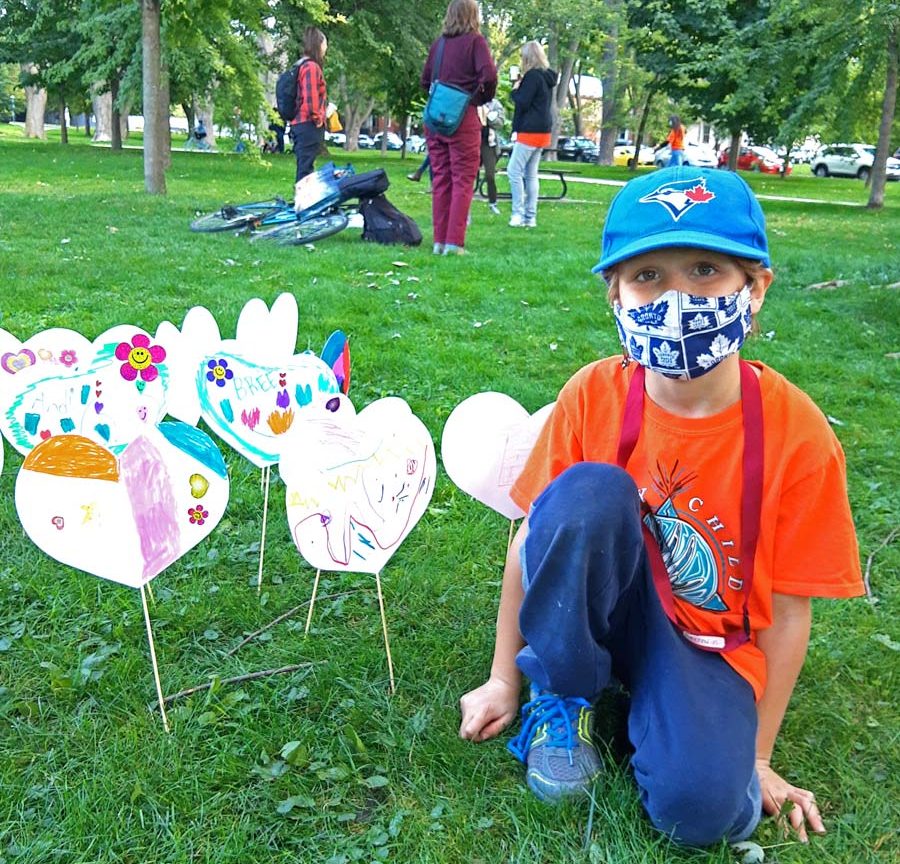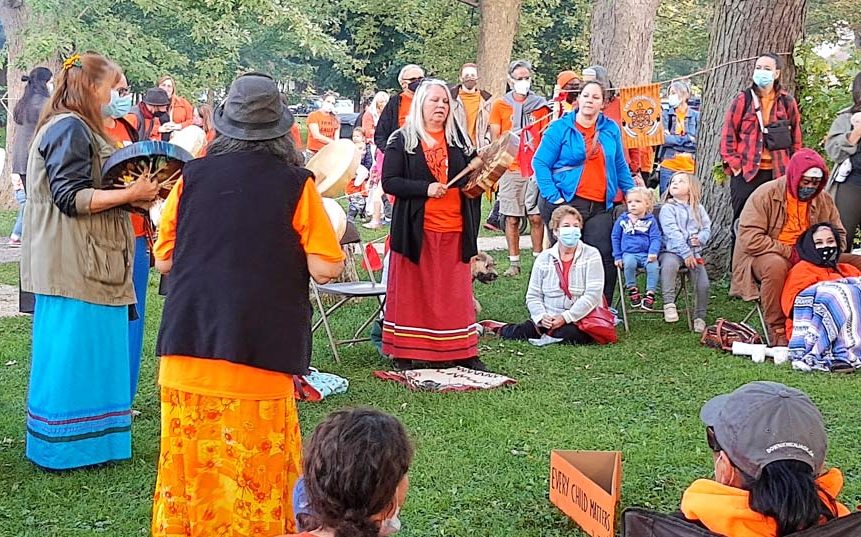GUELPH – The smell from the sacred fire wafted across Royal City Park and the sight of several hundred people wearing orange shirts was striking.
The first Truth and Reconciliation Day, on Sept. 30, was marked in Guelph with a sacred fire and drum circle in Royal City Park, at the confluence of the Speed and Eramosa rivers.
The space, with a dedicated fire pit for spirit fires, opened in 2019 as a place for spiritual gatherings by local Indigenous groups for celebration, prayer, gratitude and personal healing.
On Thursday the community at large was invited to attend to observe, to understand, and to take part.
Children made crafts, dogs romped around, people came and went, but the fire kept burning. It was the centrepiece of the event.
“Today we opened the sacred fire to the community,” said Bruce Weaver in an interview.
Weaver is Mohawk and his people come from the Bay of Quinte. He’s been in Guelph since 1982.
“This is a place to grieve or offer thoughts and prayers. However people experience the fire, we’re trying to keep it quiet and contemplative,” he said.
The day, declared a statutory holiday for federal government employees, is significant, Weaver said.
“It’s about the resilience of Indigenous people, despite the 150-year attempt to assimilate us,” he said.
“But we never were, we are still here, and we will keep on being here.”
If they didn’t know already, Canadians became acutely aware this year of the abuses that occurred to Indigenous people through the residential school system when thousands of unmarked graves were discovered at multiple residential school sites across the country.
“It has been difficult but at the same time it has opened new discussions. And now that you know, what will you do?” Weaver asked.
Weaver said Indigenous culture is circular, without a single, specified leader, while western culture is more like a pyramid and definitely appoints leaders.

Dayton Muncaster, 6, of Guelph, plants his message of caring among others created by children at the Truth and Reconciliation Day event on Sept. 30. Photo by Joanne Shuttleworth
“Hierarchies don’t work well with circles. That’s how the Indigenous community can be overlooked,” he said.
He said the work now is to identify the barriers to having Indigenous people on boards of directors, in positions of leadership and in government, so their voices will be heard, and their viewpoints will be recognized and considered.
“I’m hopeful it will make a difference,” he said.
An elder, who spoke before the drum circle began, talked about the trauma of losing Indigenous culture, their stories, their language and customs, and the intergenerational trauma that persists.
She spoke of the 94 Calls to Action that came from the Truth and Reconciliation agreement.
“Pick one,” she advised people who want to help but don’t know how. “You can probably spend a lifetime working on just one of them.
“We can’t change the past, but we can change what is going to happened tomorrow. Make that real change.”
Charisse Sayer, integrated care manager with the Southwestern Ontario Aboriginal Health Access Centre in Kitchener, said her organization attended as support.
“We’re here to provide a safe place to come and share, and to bring help and healing to the community,” she said.
Sayer said Indigenous communities have been recognizing Sept. 30 for many years – long before the federal government made it an official day of recognition.
“This is the time a child would go off to residential school. It’s when all this began,” she said.




